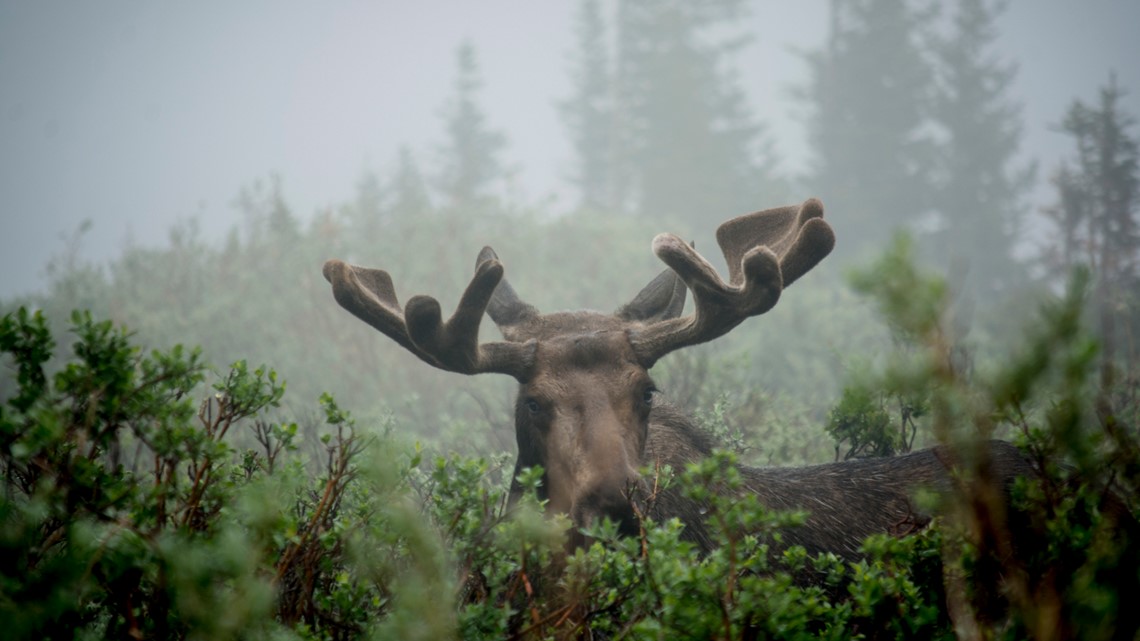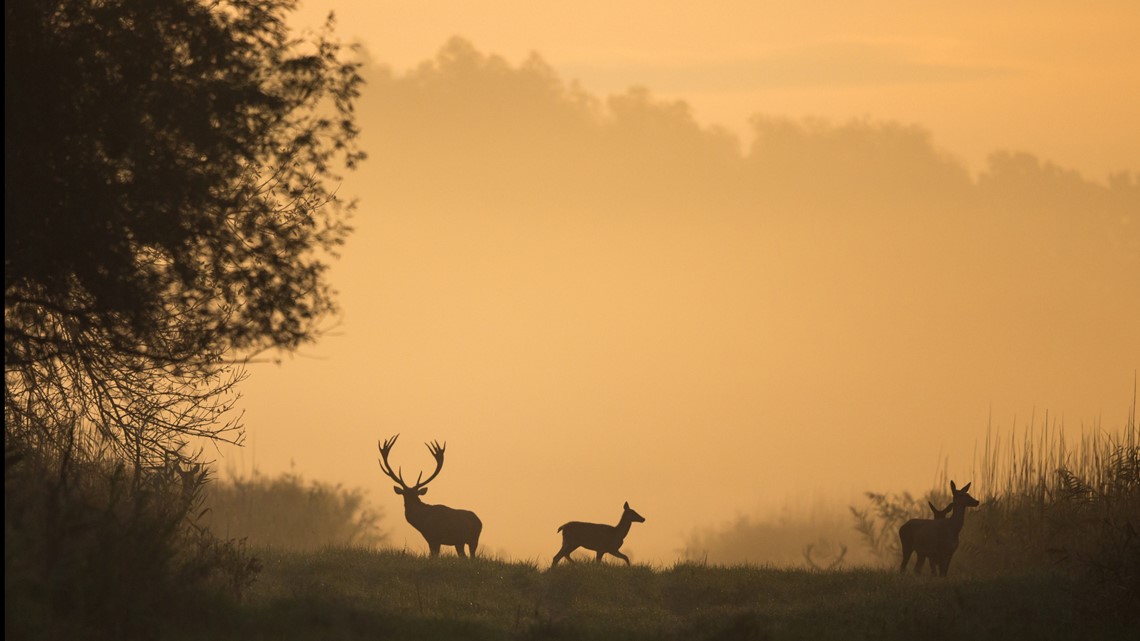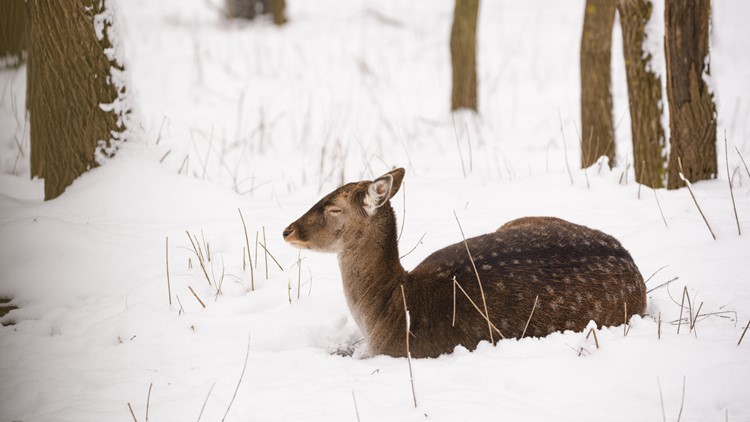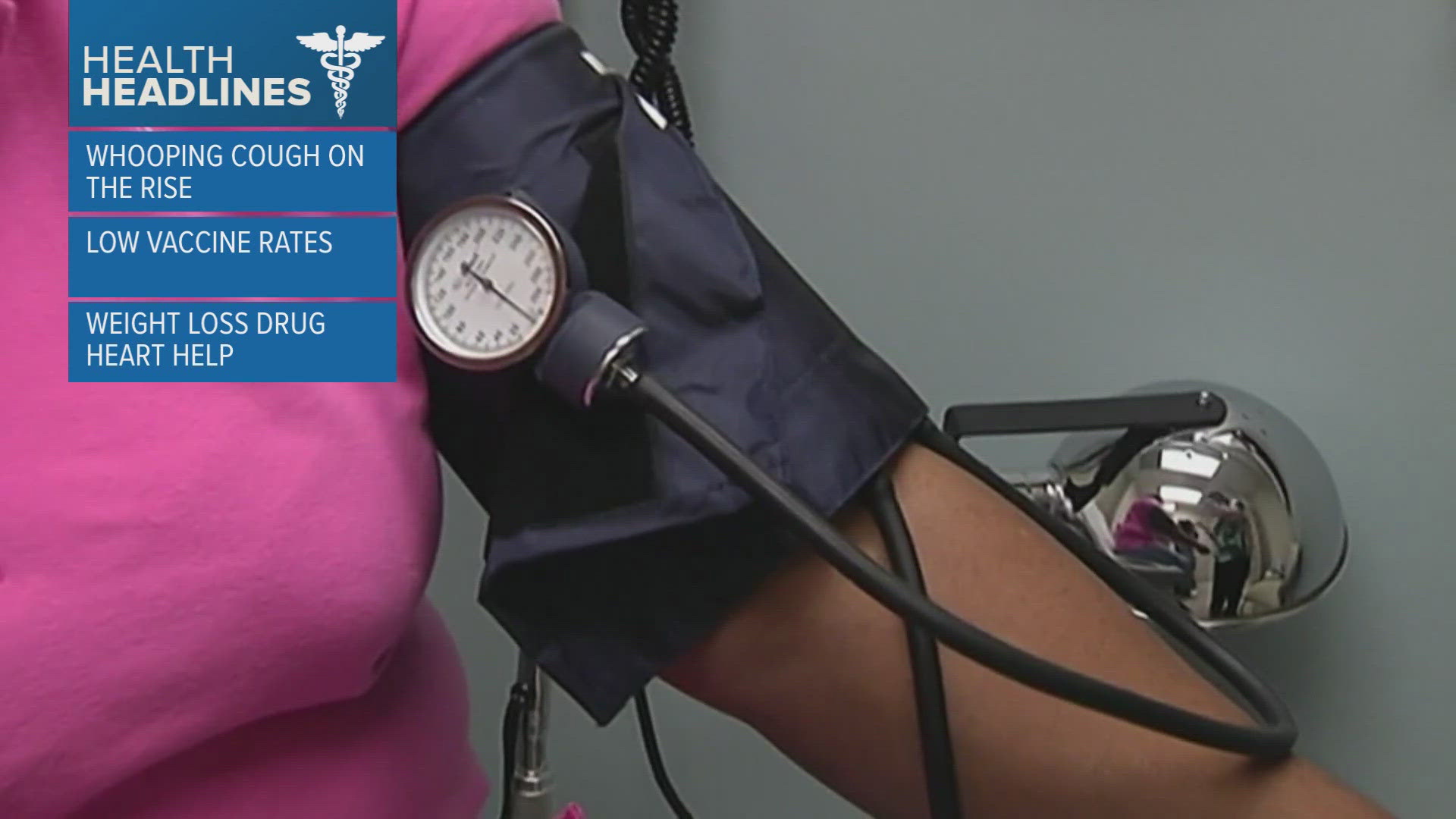News stories have been flying around the internet that warn of a "zombie deer disease" outbreak and offer mental images of "zombie" deer running amok. This is not one of those stories.
'IT'S A WEIRD ONE': AN INTRODUCTION TO CWD
The first thing to know about Chronic Wasting Disease is that it’s never been found in humans since first being discovered in Colorado in the 1960s. The very next thing to know is that it’s a disease that can’t be eradicated, can’t be tested for, is a surefire killer and will wipe out any population it infects if left unchecked.
Over the past week, CWD has made the rounds pretty much nationally – everyone is writing about the “zombie deer disease” and consistently using those words in the headline. The catch is, CWD doesn’t turn deer into terrifying zombies. It is a terrifying disease for cervids – or members of the deer family – because of its lethality and longevity.
To understand CWD, a person should know what “prion diseases” or “transmissible spongiform encephalopathies” are. They’re not exactly like bacterial infections or viral infections like we know them. Matt Dunfee, project coordinator for the Chronic Wasting Disease Alliance, a nonprofit dedicated to studying the effects and extent of the disease, explained that CWD was something most people don’t understand.
“It’s a weird one,” Dunfee told 9NEWS over the phone. “This brand of disease – why they’re called ‘alien diseases’ or ‘zombie diseases’ – [is because of] how it’s passed on.”
Dunfee explained that unlike a virus or a bacterium, there’s nothing “alive” passing on the prion disease. It’s passed around by a single protein – proteins that all mammal bodies have, he said.
“The weird thing about it is that this healthy protein gets folded just the wrong way – it changes its characteristics – the body can’t break it down anymore,” Dunfee continued. “It accumulates in the body. When it’s left to its terminal stage, it’s a pretty rough go.”
He said the scientific community isn’t clear on exactly how a protein gets “misfolded.” But, once it’s misfolded, it’ll bump into another protein and causes that one to misfold as well.
“We don’t understand exactly how that happens,” he went on. “We’ve been studying this thing for decades.”
CWD is a progressive, always-fatal disease that affects the brain, spinal cord and many other tissues in deer, elk and moose. Contamination is thought to happen through contact with body fluids and tissue or through exposure to CWD in the environment, according to the Centers for Disease Control.
Like other prion diseases, common symptoms include drastic weight loss (hence the 'wasting'), stumbling, lack of coordination, listlessness, drooling, excessive thirst or urination, drooping ears, lack of fear of people and aggression, the CDC said.


WHAT WE TALK ABOUT WHEN WE TALK ABOUT CHRONIC WASTING DISEASE
First and foremost, we are talking about cervids – deer, elk, caribou, moose – and a prion disease that affects them. For goats, there’s scrapie, for cats, there’s feline spongiform encephalopathy. For humans, there’s nearly a dozen different ones, but Creutzfeldt-Jakob Disease is the most common (the variant version of the illness is “Mad Cow Disease” in humans). According to the National Institute of Neurological Disorders and Stroke, CJD affects 350 people in the U.S. each year.
Chronic Wasting Disease is found in at least 24 U.S. states, two Canadian provinces and over 251 counties. That includes 27 counties in Colorado (see if yours is on the list at this link). The CDC put up new infection numbers in January, calling CWD numbers in wild cervids “relatively low.” Infection rates are about 1 in 10. In some places, including some places in Colorado, that number is closer to 1 in 4 of a particular herd.


Lauren Truitt, spokesperson for Colorado Parks and Wildlife – the state where the disease was first found, said Colorado is very lucky because a lot of leading experts nationwide are here and many work with parks and wildlife.
“When we talk about our numbers [of CWD infection] in Colorado, we talk about percentages of a deer herd – a family group,” Truitt explained. “So, it’s not to say the entire herd is infected. Individual animals in that herd are. You can have a relatively healthy herd that has a couple infected animals.”
But what is the disease like? What are its symptoms? Why do people call it the zombie disease?
“Most animals infected appear perfectly healthy,” Truitt said. “It takes a year for symptoms to show. You may not even know [the deer] are infected. They look like they’re in the prime of their life.”
She said the disease takes two and a half years to play out. Most people don’t even realize they’re looking at sick deer or elk. Dunfee said it is extremely rare to see deer display CWD symptoms in the wild.
“Because the animal’s neurological system is the first thing that’s impacted,” he explained. “Usually [the deer are] removed by predation or vehicle collision… they’re usually removed by natural conditions.”
Truitt didn’t agree with the classification of CWD as a “zombie” disease and instead said these animals were extremely sick. The disease is less "terrifying" and more "sad".
“If there was a brain cancer for animals,” she said, “this is one of those.”
For those hoping there’s an easy way to tally up how many deer have the disease or a way to make sure the spread is maintained – here’s a bit of bad news: there’s no way to know how many deer have the disease and there’s no way to stop its spread.***
“CWD is a ‘decades’ management thing,” Truitt explained. “Not months or years. It’s not an overnight fix, which is frustrating for everyone.”
“CWD has persisted wherever it was found,” Dunfee added. “Once it is established, it only increases in location and often increases in prevalence. We have no protocol to sanitize the environment. Those infectious proteins stay infectious for years, maybe even decades.”
He said the disease is usually in an area long before it is found.
***Dunfee brought up a case from New York state where the parks department there found a deer with CWD a few years ago and then instituted aggressive hunting in the geographical area around the deer. CWD wasn’t found in the state for some time. He said he wasn’t aware of any other case of the disease spreading ending up like the New York one. “Perhaps if you catch it extremely early and remove all animals on the landscape [you can eradicate the disease],” he said. Truitt said CPW has not considered removing all of the wildlife from Colorado's landscape at any point.


WHAT ABOUT THE HUNTERS?
The people that have the most contact with CWD-infected deer are, almost by definition, hunters. And while it is true the CDC warns hunters in areas where infected deer have been identified to have their meat tested, Truitt said most hunters are aware of the disease and know what to do.
For Colorado?
“It’s more precautionary,” Truitt explained. “We follow CDC directions on not eating infected deer. If you do get it tested and it's infected, we recommend the hunters don’t eat it.”
As far as bringing in meat to get it tested, Truitt said that’s more on a volunteer basis.
“We’ve heard hunters say they don’t care and say it’s healthier than grocery meat,” she explained. “It’s an individual preference.”
Dunfee added that while hunters may not always understand the ins-and-outs of the disease, those in Colorado are usually at least aware of it.
“In general, the longer CWD has been present in wild cervid populations,” Dunfee said, “the more informed the public usually is. They know what to do about it – particularly hunters. In CWD-positive areas, they may not always understand the disease.”
Colorado has had the disease since the ‘60s. It’s in large part thanks to the efforts of hunters that researchers and wildlife staff can manage the disease at all, Dunfee said. Without hunters, researchers wouldn’t have the number of samples needed to find and document the disease’s spread and keep its prevalence low.
Because there’s no way to test a live deer for the disease, the only way to find out if a deer population has CWD is to test a carcass; the disease lives in the spinal and brain tissue (similarly in humans, the only way to test for Creutzfeldt-Jakob Disease is to rule out all other possibilities).


CHRONIC WASTING DISEASE AND HUMANS: WILL WE GET IT?
To answer this question, we must turn to our genetic cousins: the monkey. Specifically, the macaques (mah-KACK). According to both Truitt and Dunfee, the nearly erroneous worry that the disease could spread to humans if we eat enough infected meat comes from a study don’t on the macaques monkey by German and Canadian researchers. Macaques are genetically closer to humans than any other animal infected with CWD.
“’Could spread to humans’ is probably a little bit more of a fearful [phrase] than what research is currently showing,” Truitt said but quickly added, “It’s not something to take lightly.”
According to the CDC, a study began in 2009 aimed to find out if the disease could jump to macaques monkeys. In 2017, at a conference, the researchers showed CWD had been transmitted to monkeys who’d eaten infected meat from deer and elk. This contradicted an earlier study that hadn’t shown successful transmission to macaques.
Dunfee said it’s important to take that 2009 study with a grain of salt. He explained that the methodology of the study hasn’t been made public and so the only thing anyone in the scientific community has seen is a slide show and a presentation at a conference. There’s no way to peer review the study yet.
To say it again: there has never been a known case of CWD jumping from cervids to humans.
“We’ve been very aware of [CWD] for decades. Hunters as well,” Truitt said. “The disease] is getting renewed focus because the federal government is giving it more attention and more cases are popping up than they’d originally thought.”
She said there’s no way to know how many people a year eat infected meat; most butchers in the state know about it and to take precautions, but unless every bit of hunted meat is tested there’s no concrete way to tell.
While humans (at this point) haven’t battled the disease directly, both Truitt and Dunfee said it’s important for humans to be aware of the disease and understand the dangers it poses and its effects.
When asked directly, Dunfee isn't sure if the disease could make the jump to humans and called the chances "incredibly unlikely." To understand why, he points to the state of Colorado.
"We can look at other sources of data - some occurred in Colorado - areas that have had CWD in wild cervids for a long period of time with a high population of local hunters," he said.
If the disease could be transmitted to a human, Dunfee said he believes researchers would have seen an increase in prion diseases in general in areas around the hunting grounds.
"Over the past 30 to 40 years, the human variant of prion disease has actually gone down in those areas," Dunfee explained.
THE NATIONAL RESPONSE TO THIS DEBILITATING DISEASE
There are three bills moving through Congress now that would give more research dollars to CWD, Dunfee said. He thought it would be months before any were voted on; one, he said, had dollars earmarked to try and create a field test kit for the disease.
Truitt said she was almost pleased with the “zombie” headlines because it was at least catching people’s attention – especially in Colorado. “Where we are so outdoors focused – nature enthusiasts should be aware that this is a problem and their participation is important.”
There is a lot Coloradans can do just by doing more of what they already do. The state’s website regarding CWD is being updated, Truitt said, but there are a few useful tips for non-hunters, hunters, hikers landowners and everyone who enjoys Colorado’s great outdoors: report any sick deer you see. That’s No. 1 for everyone. Hunters should keep hunting.
CPW in December released their updated CWD Action Plan for Colorado. The full report – 41 pages long – can be reviewed at this link. It paints the troubles facing the state’s deer population just from disease clearly: As of July 2018, 57 percent of deer herds, 37 percent of elk herds and 22 percent of moose herds are known to be infected with CWD in the state.
Four of the state’s five largest deer herds and two of the state’s five largest elk herds are infected. CPW – hearkening back to the idea that this disease requires decades-long management – has a Response Plan that includes a 15-year monitoring plan, a surveillance plan, and more (the summary starts halfway down page 4).
LET'S TALK ABOUT THE ZOMBIES IN THE ROOM
Zombies infect others mainly by biting, right? Well, CWD can be contracted by a bite. Some CWD-infected deer become aggressive. That basically sums up why you hear it called the "zombie deer disease." But that's not all.
Dunfee summed it up thusly: “Whenever scientists can’t put something in a black or white category, there’s a feeling of insecurity because, ‘my God, these experts don’t even know.’ It leaves a lot to the imagination.”
So, if there’s nothing ‘zombie-like’ about it, where did it come from? Dunfee blames Colorado Public Radio for first using the misnomer. He said they took the original headline down, but it was too late. I found a story with the old headline intact from January 2018: “Could Colorado’s Zombie Deer Disease Ever Spread To People?” National Public Radio then ran with it and now, over the course of a little over a year, you’ve got dozens of headlines with the word.
A quick Google search of the term “zombie deer” gets back 74 million responses, although there is no way to know how many of those are fictitious accounts of zombie deer attacks. USA Today appears to be the first news organization to chase down their own headline – this story “’Zombie’ deer disease: Why deer with CWD are actually nothing like zombies” came out three days after this fear-mongering story: “'Zombie' deer disease is in 24 states and thousands of infected deer are eaten each year, expert warns”. So… progress?
In the meantime, remember deer aren’t turning into zombies, the odds of eating infected meat are low (especially low in Colorado... although people still do), and you'll likely never know if you just ran into an infected deer. Just like Truitt and Dunfee have said: it’s important for people to be aware that there’s a disease out there that can’t be eradicated and if left unchecked could ravage the cervid population wherever it finds a foothold. But steps are being and have been taken to mitigate it.
And while the fear that plagues some articles across the net that the terrible disease could jump to humans, Dunfee and the others don't see that happening any time soon. He doesn't see it affecting human populations en masse but they don't know for sure if a single person could get it. "The real question comes down to if you are the one that got it, it would mean a lot to you," Dunfee said.
SUGGESTED VIDEOS | Science is cool



